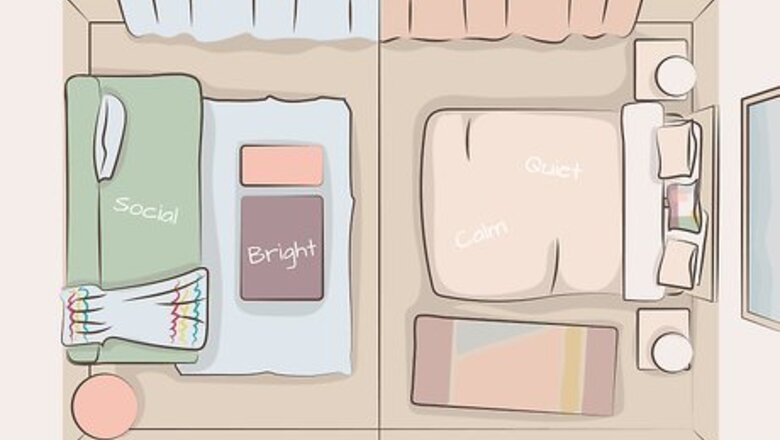
views
Get Inspired and Make a Plan
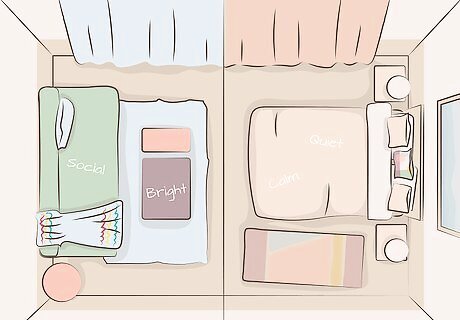
Determine the purpose and mood of the room. The vibe in the living room will be very different from the vibe in the bedroom. Think about how the room is used--is it a place to relax, a place to gather with friends, a place to work, a place to sleep--and how you want to feel when you are in the room. The function of the room is just as important as the overall look. The main function of your bedroom is as a place to unwind and sleep, so while you may be loving those loud prints, they might be better suited to a room with more action. Make a list of words that describe how you want to feel in the room: productive, quiet, social, inspired. Keep these words in mind when you're decorating and ask yourself if the furniture, colors, and accents you are choosing support the mood you want. Do a little research on color theory to help emphasize the mood. Bright colors encourage social behavior, so they work well in a living room. A room that is all one color isn't as exciting but works well where you want a calm vibe, like a bedroom.
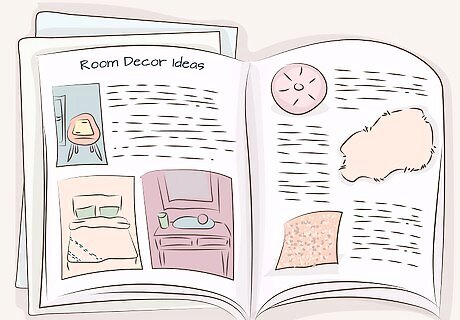
Get ideas from design blogs and magazines. Use a website like Pinterest to collect images of rooms you like. Only select the rooms that really inspire you and look like places where you would enjoy spending time. Once you have a good collection, go through the pictures and pick out any common elements to incorporate into your own design scheme. Look at colors, textures, themes, and styles (like rustic, modern, or nautical), furniture, lighting, or anything else that you notice popping up in your inspirational rooms. Remember to consider the feel of the room. If one of your inspirational rooms makes you feel happy, try to pinpoint what it is about that space that brings out those feelings. Is it because there is a lot of natural light? Or the bright colors?

Measure the length, width, and height of the room and make a floor plan. There are tons of websites and apps that allow you to enter the measurements of your room so you can play around with furniture placement. You can see if a queen-size bed overwhelms your small bedroom, or if your desk looks better at the foot of the bed or against the opposite wall. Take your measurements whenever you go furniture shopping, so you don't accidentally end up with furniture that won't fit in your room. Consider the spaces just outside your room as well: you might not be able to get that huge sofa through the door if there are lots of tight corners leading to your room. Measure doorways and elevators, and find out if you can take larger furniture apart. Even unscrewing the legs of a couch may help. Mark the location of your outlets so you can plan where your lighting, television, computer, and other electronics can plugin.
Learn Some Design Basics
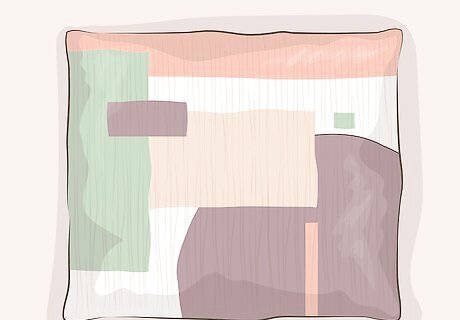
Choose a "lead" piece for your room. Select a pillow, rug, fabric, artwork, or furniture that will "lead" the rest of your decorating decisions. It should be colorful so you have a full palate to work with, and should tie into the energy and mood you want to set. Don't stop at colors--consider the pattern (geometric, organic) and texture of your lead piece and how to work those elements into the rest of the room. Your lead piece doesn't need to be something new. It could be something you already own, or a vintage or antique piece you find on craigslist.
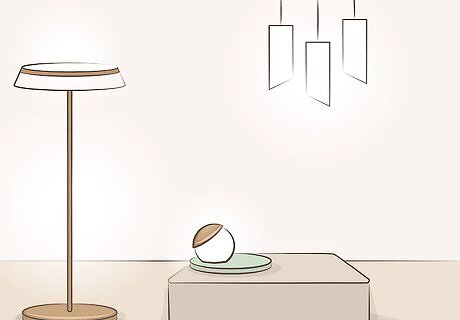
Make lighting a priority and create at least three sources of light in the room. An often ignored but essential part of decorating is having the right lighting. Rely on natural light from windows, table, and floor lamps, and try to avoid harsh overhead lighting. Dorm rooms and rentals often have a single overhead light fixed to the ceiling. If you can, swap it out for something more attractive, like an inexpensive chandelier from Ikea (remember to save the original lighting to replace when you move), or soften the light by hanging a scarf or covering it with a lampshade. Remember the lighting will affect how the colors appear in your room. That beautiful shade of green you painted your walls may look like swamp water in bad lighting. Use mirrors and other reflective surfaces to create light sources.

Paint your room a color selected from your lead piece. You can choose a brighter or more muted version of the color to emphasize different moods. Once you've selected a color, stick to complementary or analogous colors (the ones opposite your color or right next to your color on a color wheel) to avoid clashing.

Don't be afraid of negative (empty) space. You don't have to cram every square inch of your room full of pictures and furniture--your room will end up looking unfocused, busy, and cluttered. Having a lot of space in a bedroom can make the overall mood more calm and serene. If you have a large piece of artwork or something you want to stand out from the rest of the room, try surrounding it with negative space. It will draw attention to emphasize that particular piece.
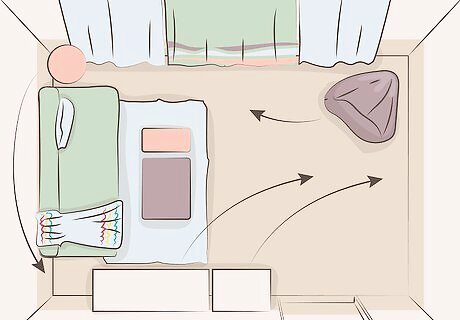
Consider the balance and flow of each room. Sometimes a room can just feel "off," and chances are it has to do with balance. A balanced room means that you don't have all your heavy furniture on one side, or all your exciting fabrics and artwork clustered together across from an empty wall. It can take a while to get it right, but try moving things around so that the things that dominate the room are equally spread out. Try walking through the room to make sure there aren't any obstacles and you can move freely into the next room, or to the table, couch, or bed. If you are using prints, try mixing to bring balance to the room. If you use striped wallpaper, try adding in less structured, more organic details, like a pillow with a floral pattern.
Decorating A Rented Space
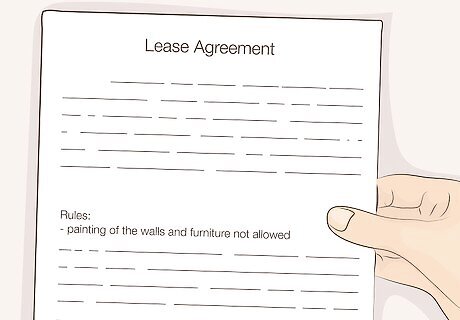
Find out what you're allowed to change. Don't lose your security deposit because you broke the rules in your lease. Ask your landlord or review your lease to see if you are allowed to paint (and if you have to paint it back to the original color when you move out) or make any other major changes.
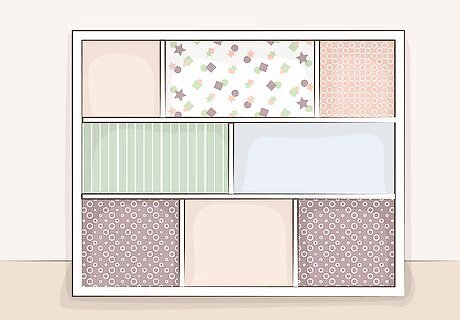
If you are not allowed to paint your room, get creative! Hang a colorful, textured rug. Put up temporary wallpaper or frame a sheet of wallpaper and hang it as an accent. Hang colorful art and photos to bring life to your blank walls. Your landlord may agree to let you paint your walls a neutral color like white, cream, or grey. Add hidden pops of color by wallpapering the back of a bookshelf or painting sides and inside of your drawers a bright color. Remember to keep anything you remove so you can replace it when it's time to move. If you swap out hardware, blinds, or lighting, keep the original someplace safe. If you're decorating a dining room, there are always a couple of chairs that will be facing an empty wall, and you could try decorating it with a gallery of different art or with a big mirror that will capture the lighting fixture you have above the table, creating more visual interest.
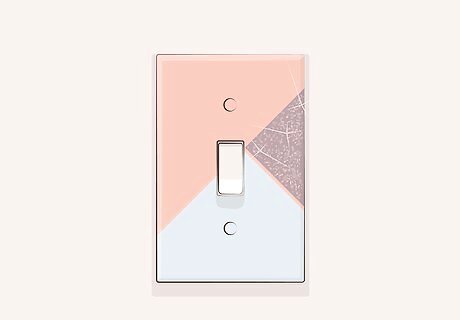
Trade out hardware like cabinet knobs, light switch plates, and doorknobs. Your landlord probably went with the most inexpensive option. Find hardware that fits into your design scheme and replace the old, cheap ones with something more "you" (again, remember to keep the original hardware to put back when you move out!).




















Comments
0 comment